 OUR
HISTORY
OUR
HISTORY
 The
Bahamas Hyperbaric Centre Ltd. opened its doors to the diving community of Bahamas in 1996. It is located
in the Lyford Cay section of New Providence Island
in The Bahamas. New Providence Island is also host
to the capital city of the Bahamas, Nassau, a short
drive from Lyford Cay. Our private chamber/clinic
facility is on the grounds of the Lyford Cay Hospital
and adjacent to the Bahamas Heart Institute. At our
unit we offer specialized medical care for commercial
and recreational SCUBA divers suffering from Decompression
Sickness (DCS) and Arterial Gas Embolism (AGE) and
practically all accidents derived from diving.
The
Bahamas Hyperbaric Centre Ltd. opened its doors to the diving community of Bahamas in 1996. It is located
in the Lyford Cay section of New Providence Island
in The Bahamas. New Providence Island is also host
to the capital city of the Bahamas, Nassau, a short
drive from Lyford Cay. Our private chamber/clinic
facility is on the grounds of the Lyford Cay Hospital
and adjacent to the Bahamas Heart Institute. At our
unit we offer specialized medical care for commercial
and recreational SCUBA divers suffering from Decompression
Sickness (DCS) and Arterial Gas Embolism (AGE) and
practically all accidents derived from diving.
Bahamas Hyperbaric Facility started its operations concentrating on Oxygen Therapy and eventually becoming known to the various dive operators.
Today, the chamber has treated over 194 dive injuries, and 52 Hyperbaric Oxygen Therapy cases.
These include local and international tourists and a few employees of the various dive operations. The Hyperbaric Oxygen Therapy cases are mainly local Bahamian residents.
We occasionally use HBOT (Hyperbaric Oxygen Therapy) to treat patients
with non-diving related ailments: burns, non-healing wounds,
crush injuries, traumas, and carbon monoxide poisoning.
Chamber Tours
If you are visiting Nassau and The Bahamas
and would like to tour our facility, you are welcome! Chamber
tours are free, but we do ask that you contact us during
normal business hours by phone to arrange an appropriate
time when patient treatments are not being conducted.
Professional
Affiliations
The SSS Network/Bahamas Chamber Facility
is a referral center for diving emergencies in the area, and is part
of the Undersea Hyperbaric Medical Society (UHMS). We are
also affiliated with the Diving Diseases Research
Center (DDRC), the European Underwater and Baromedical Society
(EUBS), the Bahamas Dive Association (BDA), and the International Divers Alert Network (IDAN)
BDA: www.bahamasdiving.com
UHMS: www.uhms.org
EUBS: www.eubs.org
DDRC: www.ddrc.org
 return
to top
return
to top
 OUR
STAFF
OUR
STAFF
We maintain our clinic on a 24 Hour Emergency
Basis, with regularly scheduled daily hours. The SSS Network/Bahamas
clinic is staffed with Certified Hyperbaric Physicians, Certified
Diving Medical Technicians (DMT's), and Patient Tenders.
The clinic is part of the international SSS Network, a global
hyperbaric medicine provider, and is operated by the Bahamas
Hyperbaric Center, Ltd.
The company follows recognized treatment tables, mostly
based on U.S. Navy protocols, the benchmark for Decompression
Illness (DCI) treatment globally. These protocols are applied
on the Physicians recommendation depending on the severity
of symptoms. After the physician diagnoses and prescribes
the adequate treatment, the Diving Medical Technician (DMT)
takes over and instructs the patient and tender to get prepared
to initiate treatment. The patient will be given one treatment, or a series
of several treatments as the case may be, until all symptoms are completely resolved .
Listed below are some of our Nassau key staff:
 return
to top
return
to top
The Bahamas also has a population of Commercial Divers who use SCUBA and other diving systems to harvest conch, lobster, and fish. The SSS Network / Bahamas also has special programs in place to ensure that these divers are treated whenever there is an accident.
In
tandem with our local dive operators, and the SSS Network
ACCESS PROGRAM, we work to provide the safest possible
treatment in the case of a diving accident.
These Dive Operators have made a strong commitment to
diving safety in The Bahamas.
Bahamas Dive
Operators |
|
|
|
Please ask the local manager for special programs designated for fishermen . They relate to education, evacuations, administrative matters and related services.
 return
to top
return
to top
 TREATMENTS & THERAPY
TREATMENTS & THERAPY
ARE YOU OR A LOVED ONE SUFFERING FROM ANY OF THESE 13 CONDITIONS?
Accepted Indications for Hyperbaric Oxygen Therapy For the U.H.M.S.
1. Air or gas embolism
2. Carbon monoxide poisoning and CO poisoning complicated by cyanide poisoning
3. Clostridal myositis and myonecrosis (gas gangrene)
4. Crush injury, compartment syndrome, and other acute traumatic ischemias
5. Decompression sickness
6. Enhancement of healing in selected problem wounds
7. Exceptional blood loss (anemia)
8. Intracranial abscess, actinomycosis
9. Necrotizing soft tissue infections
10. Refractory osteomyelitis (Infected bone)
11. Delayed radiation injury (soft tissue and bony necrosis)
12. Skin grafts and flaps (compromised)
13. Thermal burns
OSTEOMYELITIS
Osteomyelitis arises from an inflammatory process involving a bacterial infection of bone. Although physicians use aggressive surgical and antibiotic therapies, the healing
process can slow dangerously. In studies done with animals, HBOT was proven to be an effective extra or adjunct therapy for certain infections of the bone. Those infections arose from the infective
organisms Staphylococcus aureus and Pseudo-monas aeruginosa. The oxygen tension in infected bone is low. Studies show that elevating the oxygen tensions in affected bones and the surrounding tissues
helps speed healing. To be even more precise, at pressures of 1500 mm Hg, HBOT in-creases the phagocyte killing of anaerobic and some micro-aerophilic aerobic pathogens. Oxygen radicals tend to
concentrate, which proves lethal to some infective organisms. The effectiveness of some antibiotics may be enhanced, and collagen synthesis accelerates.
NECROTIZING SOFT TISSUE INFECTIONS
Necrotizing infections cause hypoxia in surrounding tissues. This condition promotes an environment where anaerobic bacteria can proliferate. The infection also triggers a c
ondition called occlusive endarteritis. Antibiotics aren't always useful against the infection because of insufficient oxygen. Aminoglycosides, the antibiotics used against such infections, need oxygen
to be transported across the bacterial cell wall. The hypoxia accompanying infection makes these medications less efficacious.
The principal treatments for necrotizing soft tissue infections are surgical debridement and systemic antibiotics. Death rates are lower among patients with necrotizing infection who
receive HBOT treatments plus standard therapy, and they require fewer debridements.
SOFT TISSUE RADIONECROSIS
Some patients undergoing radiation therapy experience complications that emerge long after the treatment. One such delayed complication is radionecrosis caused by damage to small blood
vessels, which can lead to a condition known as a progressive obliterative endarteritis with fibrosis. Scientific studies show that HBOT is a therapy that heals areas affected by soft tissue radio necrosis
by promoting angiogenesis in compromised areas.
OSTEORADIONECROSIS
Osteoradionecrosis (ORN) can be another side effect from cancer treatment, when bone sustains damage to its cells and the blood cells supplying it. Four areas of the body most likely to
be damaged are the lower jaw, or mandible; the chest wall; the pelvis and vertebral column; and the skull. Damage is most common in the mandible. Wounds to affected bone fail to heal because of hypoxia.
Fortunately the damaged bone responds to HBOT.
DIABETES
Despite the best efforts of doctors and patients, many diabetic patients develop skin ulcers. When the skin breaks down on the feet, a diabetic can face difficult challenges. Diabetic
patients often require hospitalization when they develop lesions on their feet. Early, aggressive wound care strategies that include the use of hyperbaric therapy can prevent amputations, and often vastly
improve the quality of life for patients.
Criteria for Diabetic Wounds:
1. 30 Days with minimal improvement
2. TCOM reading of 35- or higher
UNDERSTANDING HYPERBARIC OXYGEN THERAPY
Pure Oxygen : Hyperbaric oxygen therapy is pure oxygen. The air we normally breathe contains 21% oxygen. Hyperbaric oxygen therapy provides 100% oxygen within a pressurized chamber.
This hyperbaric, or high pressure, dose of oxygen provides distinct therapeutic benefits and is used to treat a variety of illnesses as well as problem wounds. It may be used as the primary treatment for
some disorders, but it is often combined in treatment plans with antibiotics and surgery.
How it works : During hyperbaric oxygen therapy, you will breath 100% oxygen while you are within the comfortable hyperbaric chamber. The chamber is pressurized as prescribed by
your doctor. The therapy greatly increases the amount of oxygen delivered to your body tissues by the bloodstream. It is important to understand that the benefits of hyperbaric oxygen therapy result from
an oxygen enriched bloodstream and not from oxygen contact with wounds.
The Benefits : Hyperbaric oxygen therapy provides many benefits in treating certain illnesses and problem wounds. While your physician will discuss the specific reason for your referral
to the Bahamas Hyperbaric Centre for this therapy, generally hyperbaric oxygen therapy provides one or more of the following benefits:
1. Enhanced wound healing and the immune response system
2. Reduces Bacterial formation
3. Stimulation production of white and red blood cells
4. New blood vessel formation (Neovascularization)
5. Oxygenates and preserves ischemic/ damaged tissues by increased 02 delivery
6. Reduction or elimination of the effects of toxic gases
7. Reduces bubble size
8. Reduction in Inflammation or edema
WHAT TO EXPECT DURING THERAPY
A Comfortable Environment
During hyperbaric oxygen therapy, you will lie conformably in the chamber and breathe normally. Typically, patients feel no differently than when lying in bed. You may listen to music, watch
movies, or nap throughout your therapy. You may experience a sensation of fullness in your ears during a portion of the therapy. This sensation is similar to the mild pressure you may feel when flying, or driving
up and down a mountain road, as your eardrums respond to the pressure changes associated with changes in elevation. Prior to therapy, you will be taught several easy techniques to avoid ear pressure discomfort.
The Number of Treatments
The number of treatments you may receive during you course of hyperbaric oxygen therapy will depend on your individual needs. Patients with problem wounds often require 20 to 40 treatments to achieve
maximum benefits. The care team at the Bahamas Hyperbaric Centre will discuss our personal treatment plan with you before therapy begins. The exact number of treatments will depend, in large part, upon your body's response
to hyperbaric oxygen therapy. The frequency of treatments varies for each individual, but typically outpatients receive treatments once a day, for five days a week.
Minimal After-effects
Hyperbaric oxygen therapy typically does not produce any after-effects. Like all medical treatments, however, hyperbaric oxygen therapy does present some risks. While these risks are quite rare, the care
team will discuss them with you before you consent to therapy. Occasionally, between treatments, some patients may experience a crackling sensation in the ears. This sensation can be easily relieved using the same techniques
to relieve ear pressure that are used during therapy. If this sensation does persist, please report the problem to the Bahamas Hyperbaric Centre care team. On rare occasions, patients may develop a temporary change in eyesight
after extensive treatment programs. In these extremely rare instances, any altered vision usually return to pretreatment levels within six to eight weeks after therapy has been completed.
PREPARING FOR THERAPY
The care team at the Bahamas Hyperbaric Center will discuss specific preparations required before your therapy. All patients need to consider the following as part of their operation therapy.
No Smoking : Tobacco products constrict blood vessels, and limit the delivery of blood and oxygen to the body's tissues.
List all Medications : It is very important that you provide a complete list of all medications, both prescribed and non-prescription, you are taking to the care team at the Bahamas Hyperbaric Centre.
Since some medications change the body's response to oxygen, the care team will discuss your individual medications with you prior to therapy.
Illness : Your therapy may have to be rescheduled if you experience any symptoms of illness. Please let the care team know immediately if you are experiencing fever, cough, sore throat, nausea, vomiting,
diarrhea, stuffy nose, headache or generalized body aches. If you need any further information about hyperbaric oxygen therapy, please call your physician or a member of the care team at the Bahamas Hyperbaric Centre. We'll be glad
to assist you.
POST-TREATMENT RECOMMENDATIONS
After every Hyperbaric Treatment, the patient should drink plenty of fluids, avoid hot showers or baths, non-prescribed medications, caffeine, carbonated beverages, alcohol, strenuous exercise, oily spicy foods,
avoid exposure to higher elevations (more than 1000 ft) or do not fly until 72 hours after the last treatment or cleared by the dive physician.
 return
to top
return
to top
 OUR
CHAMBER & EQUIPMENT
OUR
CHAMBER & EQUIPMENT
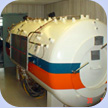 The
SSS Network/Bahamas Hyperbaric Center uses a Multiplace,
Multi-Lock Recompression Chamber, which is equipped to
accommodate up to two patients at the same time plus
a Patient Tender, who accompanies the patient for the
duration of the treatment.
The
SSS Network/Bahamas Hyperbaric Center uses a Multiplace,
Multi-Lock Recompression Chamber, which is equipped to
accommodate up to two patients at the same time plus
a Patient Tender, who accompanies the patient for the
duration of the treatment.
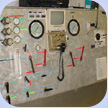 "Multiplace" and "Multi-Lock" chambers
allow us to transfer people, supplies, and any other necessities
to and from the chamber without interrupting the treatment.
The chamber may be pressurized up to 165 feet (fsw) / 50
meters, allowing us to provide any of the options called
for by the U.S. Navy treatment protocols. Many chambers
in use worldwide today can only be pressurized to a maximum
of to 60 feet (fsw) / 18 meters. While adequate for HBOT
(Hyperbaric Oxygen Therapy), and capable of delivering
some of the treatment protocols for diving accidents, they
cannot deliver the full range of diving related treatments.
Multiplace and Double Lock chambers are much more expensive
to operate, but we feel that the level of medical care
delivered is worth the extra expense.
"Multiplace" and "Multi-Lock" chambers
allow us to transfer people, supplies, and any other necessities
to and from the chamber without interrupting the treatment.
The chamber may be pressurized up to 165 feet (fsw) / 50
meters, allowing us to provide any of the options called
for by the U.S. Navy treatment protocols. Many chambers
in use worldwide today can only be pressurized to a maximum
of to 60 feet (fsw) / 18 meters. While adequate for HBOT
(Hyperbaric Oxygen Therapy), and capable of delivering
some of the treatment protocols for diving accidents, they
cannot deliver the full range of diving related treatments.
Multiplace and Double Lock chambers are much more expensive
to operate, but we feel that the level of medical care
delivered is worth the extra expense.
 return
to top
return
to top
 CONTACT
US
CONTACT
US
You may contact the SSS Network /
Nassau Facility via email, mail, and/or telephone/fax.
Email: nassau@sssnetwork.com
Mailing Address:
SSS NETWORK / Nassau
Bahamas Hyperbaric Center, Ltd.
P.O.Box CB-10981
Nassau, Bahamas
Phone/Fax: Tel: (242) 362 - 5765
Normal Clinic Hours are: 9:00 AM to 6:00 PM (U.S. Eastern
Time, - 5 GMT), 7 Days a Week
Bahamas 24 Hour Emergency Lines:
(242) 362 5765
Bahamas 24 Hour Emergency Mobile: (242) 422 2434
Lyford Cay Hospital Emergency: (242) 362 40251
 return
to top
return
to top
 |
|
 |
| 2010
© Copyright SSS Quantum, cline. |
 |
ABOUT
US  OUR
MISSION OUR
MISSION AFFILIATIONS AFFILIATIONS  BILLINGS/CLAIMS BILLINGS/CLAIMS  COMMUNITY COMMUNITY |
 |
 |
 |
 |
 |
|




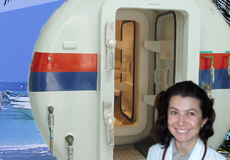




 OUR
MISSION
OUR
MISSION AFFILIATIONS
AFFILIATIONS  BILLINGS/CLAIMS
BILLINGS/CLAIMS  COMMUNITY
COMMUNITY








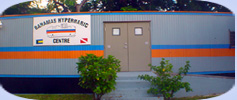
 The
Bahamas Hyperbaric Centre Ltd. opened its doors to the diving community of Bahamas in 1996. It is located
in the Lyford Cay section of New Providence Island
in The Bahamas. New Providence Island is also host
to the capital city of the Bahamas, Nassau, a short
drive from Lyford Cay. Our private chamber/clinic
facility is on the grounds of the Lyford Cay Hospital
and adjacent to the Bahamas Heart Institute. At our
unit we offer specialized medical care for commercial
and recreational SCUBA divers suffering from Decompression
Sickness (DCS) and Arterial Gas Embolism (AGE) and
practically all accidents derived from diving.
The
Bahamas Hyperbaric Centre Ltd. opened its doors to the diving community of Bahamas in 1996. It is located
in the Lyford Cay section of New Providence Island
in The Bahamas. New Providence Island is also host
to the capital city of the Bahamas, Nassau, a short
drive from Lyford Cay. Our private chamber/clinic
facility is on the grounds of the Lyford Cay Hospital
and adjacent to the Bahamas Heart Institute. At our
unit we offer specialized medical care for commercial
and recreational SCUBA divers suffering from Decompression
Sickness (DCS) and Arterial Gas Embolism (AGE) and
practically all accidents derived from diving.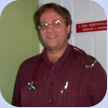


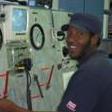
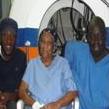
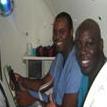
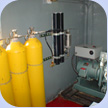 The
Islands of The Bahamas are consistently ranked among the
top five SCUBA Diving destinations in the world. Their
coral reefs, pristine waters, and prolific marine life
are a natural magnet for recreational SCUBA divers. In addition it is the #1 destination for underwater filming to the motion picture industry, having left behind a myriad of wrecks including all of the James Bond artifacts.
The
Islands of The Bahamas are consistently ranked among the
top five SCUBA Diving destinations in the world. Their
coral reefs, pristine waters, and prolific marine life
are a natural magnet for recreational SCUBA divers. In addition it is the #1 destination for underwater filming to the motion picture industry, having left behind a myriad of wrecks including all of the James Bond artifacts. 
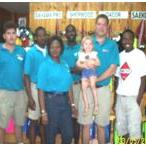

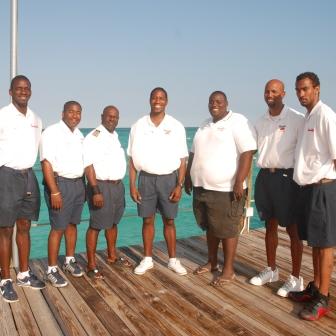
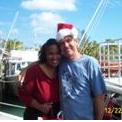

 The
SSS Network/Bahamas Hyperbaric Center uses a Multiplace,
Multi-Lock Recompression Chamber, which is equipped to
accommodate up to two patients at the same time plus
a Patient Tender, who accompanies the patient for the
duration of the treatment.
The
SSS Network/Bahamas Hyperbaric Center uses a Multiplace,
Multi-Lock Recompression Chamber, which is equipped to
accommodate up to two patients at the same time plus
a Patient Tender, who accompanies the patient for the
duration of the treatment.